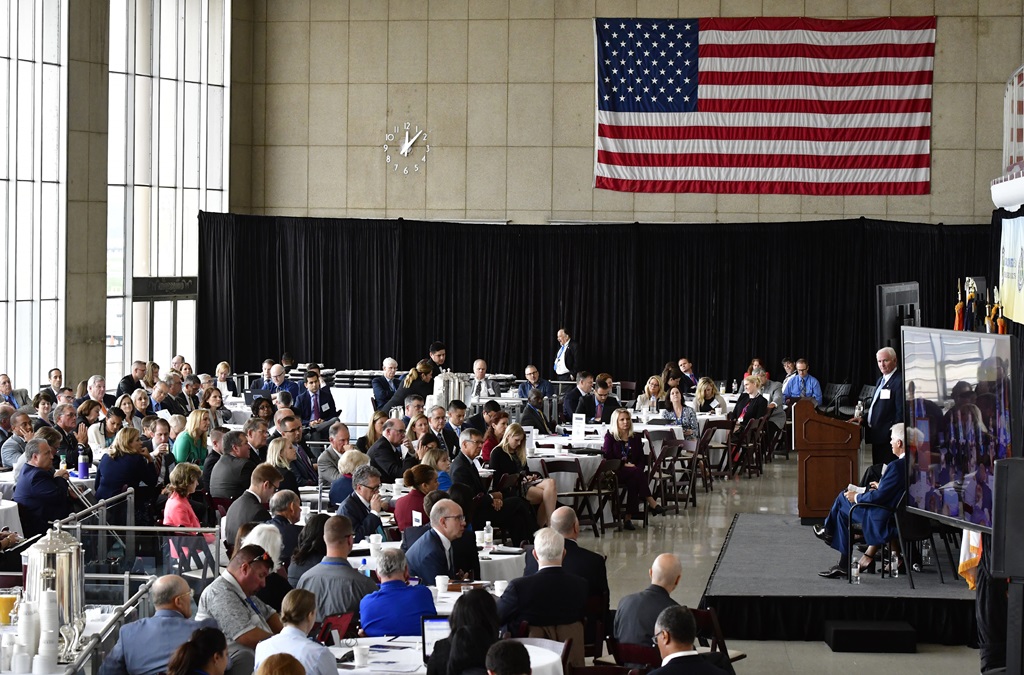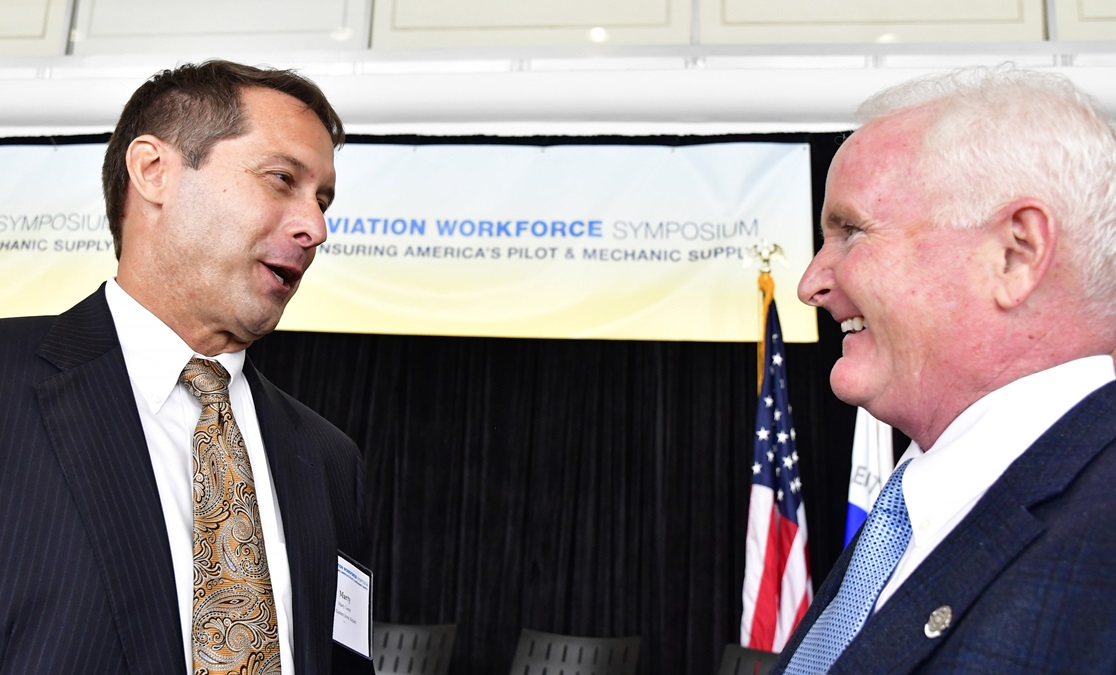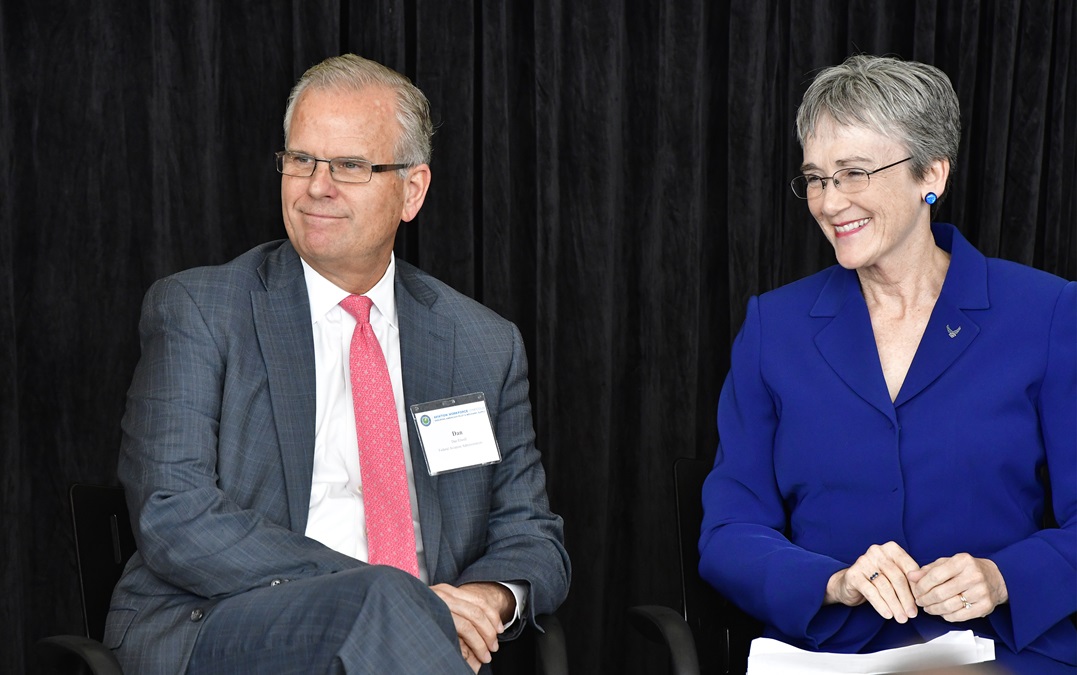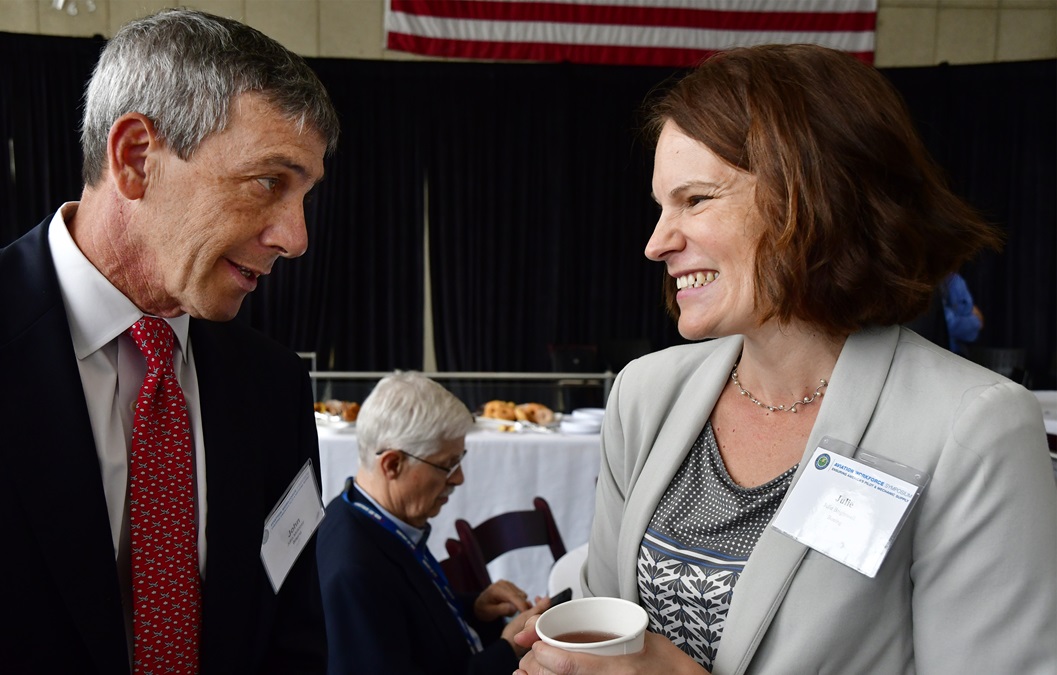'Cool' aviation careers in spotlight
FAA aviation career symposium proposes career options
AOPA President Mark Baker moderated a panel discussion on aviation jobs and how the industry could attract more young people to "cool" aviation careers during a workforce symposium at Ronald Reagan Washington National Airport’s historic Terminal A building Sept. 13.
The program opened with a professional panel and robust discussion about drone operations and foreign-based pilots who travel to the United States for flight training, among other topics.
FAA Acting Administrator Daniel K. Elwell said that in his lifetime he’s seen aviation careers fall in and out of favor with young professionals and that he felt it was time aviation became “hip and cool” again. Elwell introduced Baker, who led a "Priming the Pipeline" panel discussion with a broad spectrum of aviation stakeholders.
Panelists included Cindy Hasselbring, senior director of AOPA’s High School Initiative; Chuck Horning, maintenance program director for Embry-Riddle Aeronautical University; John Desmarais, operations director for the Civil Air Patrol; Sean Elliott, safety expert for the Experimental Aircraft Association; Vanessa Blacknall-Jamison, board chairwoman for the Organization of Black Aerospace Professionals (OBAP); and Pat Cwayna, CEO of West Michigan Aviation Academy and chair of the AOPA high school initiative steering committee.
Baker recalled that Cessna, Piper, and Beechcraft pilot training centers were bustling facilities in the late 1970s and 1980s before the bottom dropped out of the general aviation industry. “We do need to solve this [decline] and we can with another 10,000 to 15,000 pilots per year,” he noted.
Hasselbring said there is a renewed interest in aviation among young people and their parents. She noted that when a Maryland school rolled out the AOPA high school science, technology, engineering, and math (STEM) curriculum, the class “immediately filled up” and a second class opened to accommodate those interested.
Horning said bringing aviation mechanics into the industry was “quite a challenge” because parents typically equated maintenance careers to what they’ve experienced in an automobile repair shop. He explained that the two fields were quite different and pointed out more rigorous training, higher expectations, and recurrent training required for aviation technicians.
Desmarais noted that the CAP counted “over 20,000 cadets participating in our youth aviation programs,” including many who participated in search-and-rescue missions and other duties. “With 6,000 hours [flown] last year there are a lot of kids that want to get into aviation.” He said he is surprised when he hears about youth who haven’t yet experienced the joy of flight and reiterated that the volunteer U.S. Air Force auxiliary group has a wealth of “hands-on” opportunities for young people.
Elliott said the EAA Young Eagles program that matches youth with aviation mentors for a first flight experience was “magical.” He called the more than 51,000 pilots who participate in the program “significant” to help secure the future of the aviation industry.
Cwayna said, “It’s really cool to go to our school and become an aviator,” echoing Elwell’s viewpoint, and said he anticipated producing “probably 15 to 20 new pilots this summer.”
Baker recalled that he became interested in aviation in high school and wanted others to capture the same sense of accomplishment and pride that comes from piloting an aircraft. He pointed out that growing the aviation population needed to begin from the ground up and explained how AOPA started the You Can Fly Initiative to bolster the pilot ranks. Baker said he welcomed the opportunity to reinvigorate airports and aviation by inspiring young people, “particularly in high school, flight schools, and flying clubs.”
Horning said the aviation university hosted a number of summer activities that focused on flying, “and there’s no shortage of kids” willing to participate in aviation camps, but getting them out of the cockpit and under a cowling was “a challenge.”
Blacknall-Jamison said that among females and minorities, “the interest [in aviation] is an awareness issue and knowing which opportunities are presented for minority students.” She said her organization’s ACE summer camp programs introduce aviation to young people in 30 U.S. cities and were popular among minority parents and their children because they give them a chance to experience what it might be like to pursue aviation careers. More than 40,000 youth participated in 2017 OBAP programs, and she set a goal of 60,000 attendees for 2018. “We’re trying everything to open the opportunities” of aviation careers to a wider variety of people, she said, noting that it was “important to put money behind the words,” to “make aviation exciting and cool” for the next generation.
Hasselbring said she’s noticed an increase in females attending AOPA High School Aviation STEM classes compared to female airline pilot numbers. “When we think about diversity in aviation, 20 percent of students in our field test classes were girls,” she noted. Hasselbring said the numbers were a good start and something to improve upon as the AOPA High School Aviation STEM program continues to grow.
Cwayna, who was named Michigan’s top public charter schools administrator for 2018, said that he’s seen a steady increase in young people pursuing aviation careers since his school’s program began in 2010. “We started with 80 students and now we have 620—with a waiting list,” he added. “Students are driving 50 miles and farther to come to our airport. It is absolutely incredible.”
















